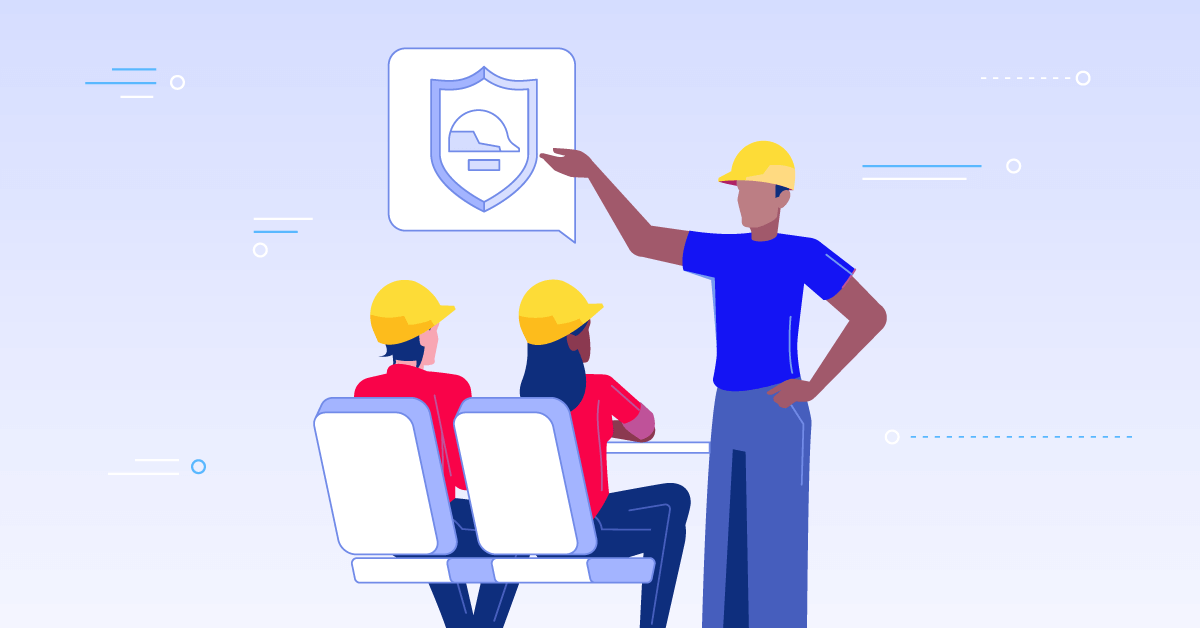Even in our everyday lives, we appreciate the effects of contextualization – behaving in one way in one situation, while using another set of behaviors in a different context – although we may not be actively conscious of it.
In this article, we’ll take a closer look at the contextual knowledge definition, so that we can better understand how it can be leveraged in corporate teaching and learning settings.
Understanding contextualized learning
Anyone who works in a team will understand the social stigma associated with people whispering when they are in a group setting. It’s often considered rude and impolite. However, when considered in another context – of say, a hospital, or a gathering like a funeral – then whispering may be deemed acceptable.
Contextualized teaching and learning builds upon a similar concept of putting academic activities into perspective to achieve the best teaching and learning outcomes.
So, what exactly are contextualized learning activities, and how do they impact learning outcomes?
Researchers and academics Berns, Robert G. and Erickson, Patricia M. published a paper that defines contextualized learning as a practice that endeavors to link theoretical constructs that are taught during learning, to practical, real-world context.
The underlying theme behind the use of contextual learning activities is simple. It recognizes that by embedding instructions in contexts that adult learners are familiar with, learners more readily understand and assimilate those instructions.
By embedding instructions in familiar contexts, learners are more likely to learnShare on
This realization is grounded in constructionist learning theory, which holds that people learn better when encouraged to construct relevance between the instructions they receive, and interpretations of those instructions within the context of their own environments.
Why use a contextual learning approach?
For any teaching and learning approach to be adopted as an acceptable pedagogy, it must demonstrate that its core principles are in keeping with the broader body of pedagogical findings. Contextualized teaching and learning approaches have been proven to be grounded in:
1) Pedagogical theory: Contextual learning activities are aligned with the mainstream pedagogical body of knowledge, including Motivation Theories, Social Learning Theories, Problem-centered Learning and modern psychological and physiological research around how human brains learn.
2) “Real world” application: Rather than teach for the abstract or theoretical world, using contextual learning strategies helps companies prepare their employees to take on real-world challenges that their staff faces in the workplace.
3) Specificity: Because the contextual learning approach to training a workforce relies on “context”, trainers can offer content built to deal with company-specific context in mind.
4) Speed: By focusing on the “big picture first” (more on this later), this training approach trains employees much quicker than the traditional “crawl…toddle…walk…run” approach.
While other training approaches might also work well, the inclusion of contextual learning examples as part of corporate training will help produce a workforce that’s more adept at real-world problem solving.
Contextual learning strategies in practice
The following best practices should be considered when designing your contextualized approach to learning and training your corporate staff:
1) Design with the most relevant approach in mind
There are a number of contextual learning strategies that you can implement, including Knowledge-based, Skills-based and cognitive approaches. Make sure that you choose the strategy that’s most appropriate to the learning you wish to impart to your audience.
For example, while a skills-based approach might work in one context, in another it might ignore the practical application required to effectively transfer knowledge regarding a specific learning objective.
2) Design for effectiveness
For a contextualized approach to learning to be effective, it’s not sufficient to just impart the knowledge or skills required to achieve a learning objective. You need to design activities that also teach the procedurs, processes and discipline on how and when to apply those skills and that knowledge in a given context.
3) Design for transference
Often, when an employee moves from one position to another (horizontally, laterally or even externally, to another organization), they need to be able to transfer their skills, knowledge and experiences to that new environment.
A research-based publication of the Commission on Behavioral and Social Sciences and Education National Research Council found that much greater transfer of knowledge takes place when information is organized in a conceptual framework. When that happens, learners were found to be more adept at applying what they learned to newer situations in the workplace.
Therefore, it is important that you design your contextualized learning activities in a way that learners are able to adapt and transfer them to newer contexts, as opposed to relating them to just one specific context.
4) Design with social consciousness
The typical workforce today is highly multicultural, with employees coming from different ethnicities, cultural and social backgrounds. Therefore, it is imperative that when pulling together contextualized learning activities as part of a course, you also factor in those social “nuances”.
In some cultures, for instance, it may not be appropriate for male and female colleagues to participate in two-person activities. As a result, learners with specific cultural backgrounds might be resistant to absorbing new information/skills using a contextual learning approach that challenges their ingrained social norms.
In such a situation, slightly changing the makeup of the learning team, perhaps into a small group configuration (as opposed to one male and one female), might create a better context for learning to be transferred more effectively.
5) Design iteratively
Compared to traditional approaches, contextual learning involves a slightly different approach to designing learning activities. You need to be more iterative in designing learning content, by starting with an immediate focus on broad contextualized learning activities that learners need to perform as part of their daily work routine first.
You can then build supporting contextual learning activities that focus on the basic skills and knowledge required to effectively carry out those broad activities. This approach is repeated in several iterations, enabling learners to get a better appreciation of the “big picture” first; and therefore subsequently grasp the “smaller” nuances that make up that broader view.
6) Design for groups
The most successful contextual learning strategies are those that are designed with groups of learners in mind– as opposed to focusing on individual learners. That’s because in the real world, learners must interact with fellow workers, supervisors, management teams, and a host of other individuals and groups.
By designing your contextual learning activities with groups of interdependent learners in mind, you stand a better chance that learning will mimic the real world where these individuals will subsequently interact. In designing group learning, you’ll also leverage the power of individuals learning from other individuals – something that routinely occurs in the workforce today.
7) Design assessments appropriately
When designing your contextualized approach to learning, you should evaluate learners based on authentic assessments, instead of measuring their command of remembering or blindly performing specific activities.
Jon Mueller, Professor of Psychology, defines authentic assessment as assessments where learners are required to show their command of what they learned, by applying that knowledge and those skills to real-world tasks.
Assessing the outcomes of contextualized learning activities based on authentic assessment will ensure that transfer of learning has actually occurred and that employees are well equipped to put the skills and knowledge learned to effective use in their workplaces.
The takeaways
Contextualized learning is real, and it works! By including contextualized learning activities in your corporate training initiatives, you’ll not only produce workforce-ready teams more quickly but will also ensure that your teams absorb the information being taught more effectively.


